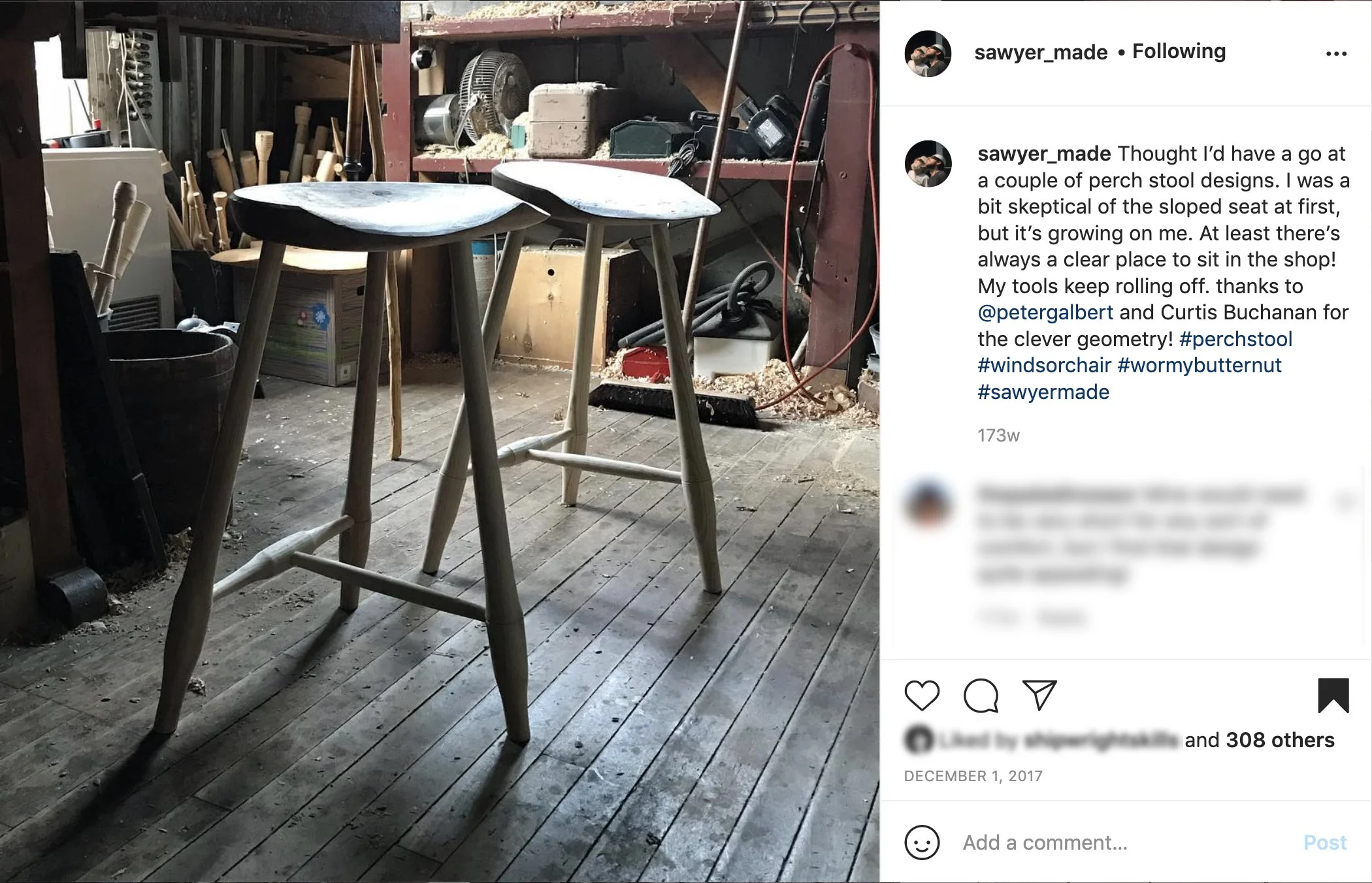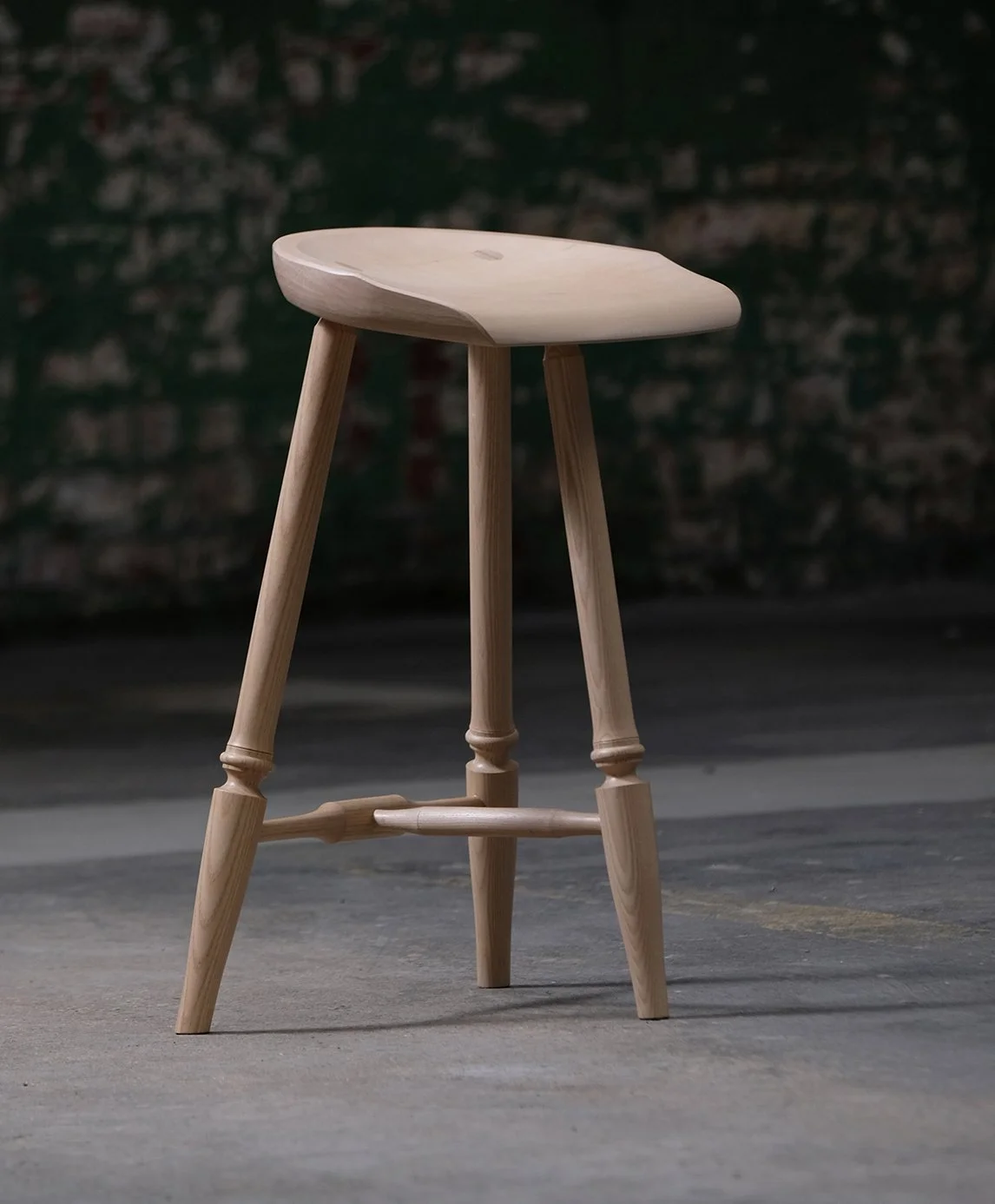The Next One_ Background
Just before Xmas I managed to aggravate an old back injury which put me out of action for over a week. While visiting a physiotherapist in Woodend I asked him his opinion on the best seating position for me whilst I recovered. He responded immediately, ‘the next one.’
Glen Rundell_ chair maker
Much to my parents’ dismay, my long history with and addiction to BMX (bicycle motocross), had led to a wide array of injuries. Broken arms, ribs, hand, and leg, torn ACL’s, dozens of stitches. Yet I had not ever thought those activities were killing me. But there I sat in my office chair, poised in a position of utter inactivity, and I felt like I was dying.
The prospect of a normal, professional, aspirational career brought a guarantee of security but not comfort, certainly not health. The degradation of my body in those three short months foreshadowed a future I could not get myself to bear.
an x-ray of my right hand after undergoing a surgery for what is commonly called “boxers’ fracture.”
Two years, a college graduation, and half of a recession later, I found myself working in a machine shop in conditions and manners that by contemporary standards would be considered drudgery. I felt better than I ever had. I found myself sore after work. Not during it. Gone was the atrophy. Gone was the chair shaped back brace. Gone was sitting.
The feeling of weakness had been replaced with one of strength. The hunch in my shoulders had been replaced with a stance of pride and better posture. And the nagging pain in my stomach, for which I had feared chronic illness, had been long forgotten. It is of great irony that my new found job, which literally contained the word machine in its title, had made me feel more human.
For 5 years I worked making forklift parts, none of which was ever descriptive enough in its design or name to hint at its final function. It was hard, hot, loud, and smelly. However it was not back breaking. The turning of vise handles and allen wrenches gave my hands strength they had never felt. The carrying of coolant buckets and parts bins translated into core and leg strength which no amount of BMX could ever have created on its own. It was work. And though it didn’t make my wallet feel right, my body had never felt better.
The shift in careers from machinist to adjunct instructor had left in the shop much less, and sitting much more, but the class with George Sawyer brought back the feelings of real work.
I noticed the odd little stool peaking out from underneath the longer of the two workbenches. It wasn’t so much as in storage as conveniently placed out of the way to not take up any of the precious little floor space.
“What’s this?” I asked, as I pulled it out and looked it over.
“Oh, the perch?!,” George let out with his infectious excitement he showed over many of the things in his shop full of treasures. “Peter Galbert and Curtis Buchanan designed that in partnership with someone who does research into ergonomics.”
The perch and the form it took were new to me, filling me with excitement and curiosity. Though a concept not of his own, I was certain this particular example was George’s personal take, as the turnings were clearly of his style.
The first perches I ever sat on, in George Sawyer’s father Dave’s shop. Photo courtesy of Sawyer Made’s Instagram.
As I sat down in the perch, I was put in a position I had never felt before. My hips rolled forward, my feet planted soundly into the floor, and my spine curved in a way I had only seen in anatomical illustrations. My new found posture and bodily position made me immediately aware of who this unnamed researcher was.
Earlier on in this very same trip, while in a hotel in Rhode Island, I had finished reading The Chair: Rethinking Culture, Body, and Design, by Galen Cranz.
A particular quote from the book came immediately to mind. “The optimal solution is not a better design of the components of the chair itself, but rather reconfiguration of the chair itself to allow a fundamental change in posture.”
I was certain that this design was her research made manifest in physical form.
During a month long trip between Massachusetts, Rhode Island, and ending with taking the previously mentioned windsor chair course with George Sawyer, I read and deeply studied Galen Cranz’s book, The Chair: Rethinking Culture, Body, and Design.
The culmination of said trip was a week long workshop with renowned windsor chair maker, George Sawyer, in central Vermont. I along with my good friend Dan, would spend a week living in a yurt in the depths of a Vermont winter, learning to make a continuous arm windsor.
Upon my return to Ohio I got to work designing and making the most radical interpretation of a perch I could think of, and it was for 2 years that The Next One existed in this form, titled at the time, The Considered Assistant.
After sitting on the backburner for over 2 years, I decided to revisit this to me way of seating, but I figured I should start by going to the roots. I pulled out the set of patterns George Sawyer had so kindly given me, and made a copy of his perch.




